The Latest from Boing Boing |  |
- Harold Lloyd and friends
- The Rap Map
- The glory (and tackiness) of ancient Greece
- Project: Make a simple motor
- TruFocals eyeglasses
- Tiny kids hired as models for inflatable swimming pool photo
- The A, B, Cs of liver failure
- Tales of a bike messenger / acid head
- Big month for slack-key guitar lovers
- Space Food: The Best and Worst
- Fashion for Vinyl Fans
- Psychedelics to treat depression
- Tactical pens
- LEGO architect recreates famous buildings
- The most isolated man on the planet
- Incredible vintage lucite organ for sale
- Simon's Cat in "The Box"
- Explain this photo
- The CIA's obsession with LSD in the water supply
- Indie comic/cartoon extravaganza in Minneapolis this weekend
- Pho Challenge: Eat a baby?
- Bears hung out at pot farm
- Blade Runner tribute: "Bladerunner revisited >3.6 gigapixels"
- Nagoya and the convention on biological diversity: primer 1
- 2010 is a key year for biodiversity stewardship
- "Magnetic" woman baffled by attraction
| Posted: 20 Aug 2010 10:11 PM PDT  8 foot 7-inch-tall George Auger, 29-inch-tall Princess Wee Wee and an unidentified three-legged performer, all of the Ringling Brothers Circus, pose with 5 foot 9-inch-tall Harold Lloyd on the set of Safety Last. C. 1923. |
| Posted: 20 Aug 2010 08:08 PM PDT The Rap Map—a fascinating and still-growing guide to locations across the U.S. that have been given shout-outs in rap songs, all cataloged in Google maps with lyrics and interesting trivia notations. Currently, it's rather NYC-centric. But there's a "Suggest a Location" button that can help change that. |
| The glory (and tackiness) of ancient Greece Posted: 20 Aug 2010 07:25 PM PDT  I'd always heard that archaeologists believed the ancient Greek and Roman monuments we know as serene, white marble were, originally, ridiculously RGB. Io9 has a great piece up explaining how researchers are able to definitively document the multicolored nature of classical art. First, they scan the pieces with UV light, looking for fluorescent traces of organic pigments. Then, infrared and X-ray spectroscopy narrow down the chemical make-up of those pigments.
Via Irene Delse on Submitterator |
| Posted: 20 Aug 2010 04:12 PM PDT Here's a fun motor you can make in a few minutes. You need a 1.5 Volt battery (AA or AAA), two safety pins, some tape, a small magnet, a foot of wire, some nail polish, and some Post-it Notes. 1. Tape the two safety pins to the battery as shown. 2. Wrap the wire into a coiled loop as shown. Strip the insulation off the ends of each wire so that the wire comes into contact with the safety pins. 3. Before you put the coiled loop of wire into the holes in the safety pins, apply a bit of nail polish to the top of both sides of the exposed wires. Leave the bottom of each wire unpainted. This will allow the wires to make an intermittent electrical circuit with the battery, which will make make it spin. 4. Use a pad of Post-It Notes to raise or lower the magnet so that it is as close as possible to the loop of wire without touching it. 5. Give it a spin and watch it go! (I shot this video several years ago, and it was fun to hear my daughter's baby voice.) |
| Posted: 20 Aug 2010 04:35 PM PDT As people get older, their eyesight starts to decline, and I'm no exception. I was considering bifocals or progressive lenses until I was contacted by TruFocals, a company that makes a new type of eyeglass with adjustable focus. It sounded interesting, so I sent them my prescription. A week later I got a pair of circular lensed John Lennon-ish spectacles. They have a little slider on the bridge that I can move with with my finger to change the focus. When the slider is to the right, I can see fine print, and when the slider is to the left I can drive and watch movies. With the slider in-between, I can get crystal clear vision at any distance. They work very well. If you aren't dissuaded by the $895 price tag, they might be just what you are looking for. Visit the TruFocals website for more information. Above: a video I made of the TruFocals in action. Learn more about how they work at the link below. |
| Tiny kids hired as models for inflatable swimming pool photo Posted: 20 Aug 2010 02:11 PM PDT  Since David Ng is our guestblogger for the next couple of weeks, I thought I'd pull up this post from 2008. On the right are David's kids standing in front of the Wild Waves Water Park he bought for them. On the left are six of the smallest children on the planet, who have earned their parents a fortune as models for outdoor recreation products. |
| Posted: 20 Aug 2010 01:49 PM PDT I've long known about Hepatitises A, B and C—unrelated viral infections that all share the same name because they all cause inflammation of the liver. Until just a couple of minutes ago, however, I had no idea that there was also a Hepatitis D—which you only seem to be able to get if you already have Hep B—and a Hepatitis E. There's also a hypothetical, but never proven, Hepatitis F and a former Hepatitis G—the name of which was changed to GB virus C after researchers realized that, while it infected humans, it didn't actually appear to do any damage. No inflamed livers, no entry into the Hepatitis club. (Via Tia Ghose) |
| Tales of a bike messenger / acid head Posted: 20 Aug 2010 01:04 PM PDT  Photo by Christopher Isherwood (who is NOT the bike messenger below). Creative Commons Attribution-ShareAlike 2.0 Generic. A fellow who calls himself Muksi likes to trip on LSD while on the job as a San Francisco bike messenger. He wrote about what it is like on Erowid, an online library of drug information and experiences. To describe the experience of putting my life in the hands of the San Fransisco Traffic God's while the sky melds together in an amalgous orgasm of blue and magenta and while cars leave such profoundly solid tracers behind them that I can't tell whether they're limousines or not is, essentially, impossible. The experience is just fucking ludicrous. I've been bombing hills at 35 miles an hour before only to have taxi cars open their doors in front of me with only ten feet to brake. I've been within inches of been piledrived by several ton cars in direct oncoming traffic. On one occasion, the quick release on my primary brakes snapped while I hauled ass down one of the steepest streets in the city (which is really saying something, if you've ever been to San Fransisco before), forcing me to simultaneously wedge my foot between my front wheel and my front forks to slow myself down while navigating my bike through two massive four way intersections. I was a half second away from getting anally raped between a bright silver Hummer and a half lime-green/half hot-pink sedan. I suspect that this was not the actual colour of the vehicle.Note: I don't think he should take drugs and ride a bike. Tales of an SF Bike Messenger/Acid Addict (Via DoseNation) |
| Big month for slack-key guitar lovers Posted: 20 Aug 2010 12:48 PM PDT I love Hawaiian slack key guitar because it's such a beautiful melding of musical traditions. Songs about a favorite horse who falls into a lava tube, or much more universal experiences of wistfulness, sound amazing in this style. Here's a slow sample from legend Led Kaapana:
August is one of the best months for aficionados of the form, with the Aloha Festival in San Francisco and the annual Hawaii Slack Key Guitar Festival in Honolulu. I posted a couple of examples from this month's events below. From the Honolulu Festival, here's a few samples of the range: Fran Guidry was a highlight at the San Francisco event. Here's him performing a piece he did there: One of the best intros to the form is the Dancing Cat album Hawaiian Slack Key Guitar Masters, Vol. 1 |
| Space Food: The Best and Worst Posted: 20 Aug 2010 05:33 PM PDT 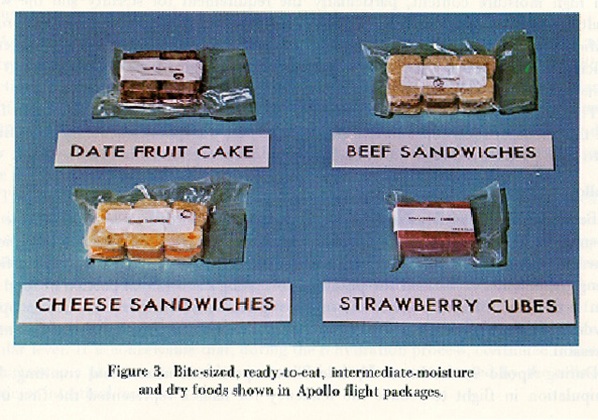 Astronaut foods during the Gemini and Apollo programs were highly processed, because "low-residue" food meant fewer encounters with the dread fecal bag. To prevent crumbs, which could float into eyes and instrumentation panels, many foods - even "sandwiches" -- took the form of bite-sized cubes lacquered with waxy, congealed oils. Rarely has anything so cute been so loathed. The coating stuck to the roof of the mouth and the cubes had to be rehydrated by "holding in the mouth for ten seconds." Runner-up: dehydrated "astronaut ice cream." Only three astronauts (Apollo 8) ever ate it in space, and not very much of it. Without "the creamy, icy sensation of regular ice cream," writes retired NASA food scientist Charles Bourland, "it just wasn't popular with the crews." Space food has grown moister and more normal over the years, to the point where Emeril and Rachael Ray have gotten involved and Bourland (with science writer Gregory Vogt) has put out a cookbook: The Astronaut's Cookbook: Tales, Recipes and More (Springer, 2010). It is somewhat unusual for the genre, in that it includes sentences like: "The medical guy dropped to the deck and soaked up the emesis with a sponge so that it could be determined how much of the liquid Joe had actually consumed." Below is Bourland's recipe for the astronauts' all-time favorite space food. Astronaut Story Musgrave used to request it for breakfast, lunch and dinner.
|
| Posted: 20 Aug 2010 12:41 PM PDT  Photo: Shannon Cottrell/LA Weekly from "Red Zebra @ Crocker Club" Shannon Cottrell and I saw this outfit at a fashion show from L.A.-based Beauty is Pain held at a party called Red Zebra a few weeks ago. I'm not sure if it's conducive to sitting, but it seems like an interesting use of records that are broken or scratched to the point where they are no longer playable. Link: Red Zebra @ Crocker Club (Photos) Beauty is Pain on Twitter Photo: Shannon Cottrell/LA Weekly from "Red Zebra @ Crocker Club" Shannon Cottrell and I saw this outfit at a fashion show from L.A.-based Beauty is Pain held at a party called Red Zebra a few weeks ago. I'm not sure if it's conducive to sitting, but it seems like an interesting use of records that are broken or scratched to the point where they are no longer playable. Link: Red Zebra @ Crocker Club (Photos) Beauty is Pain on Twitter |
| Psychedelics to treat depression Posted: 20 Aug 2010 12:39 PM PDT Maybe LSD in the water supply would be a good thing! New research published this week in the scientific journals Nature Reviews Neuroscience and Science suggest (once again) that psychedelic drugs have potential as a treatment for depression. Neuroscientists from the Yale University School of Medicine conducted a study where they gave rats small amounts of the powerful dissociative anesthetic ketamine (aka "Special K"). The drug apparently alleviated symptoms of depression in the animals and also regenerated damaged connections between brain cells. From a Yale press release: "It's like a magic drug—one dose can work rapidly and last for seven to 10 days," said Ronald Duman, professor of psychiatry and pharmacology at Yale and senior author of the study. Ketamine traditionally has been used as a general anesthetic for children, but a decade ago researchers at the Connecticut Mental Health Center found that, in lower doses, the drug seemed to give patients relief from depression, Duman said. In these initial clinical studies, which have been replicated at the National Institute of Mental Health, almost 70 percent of patients who are resistant to treatment with all other forms of antidepressants were found to improve within hours after receiving ketamine. However, its clinical use has been limited because it has to be delivered intravenously under medical supervision and in some cases can cause short-term psychotic symptoms. It has also been used as a recreational drug, known as "Special K" or sometimes just "K." So Duman, colleague George Aghajanian and the Yale team set out to map the molecular action of the drug in the prefrontal cortex of rats that could lead to potential targets for a safer and more easily used drugs. "Yale Team Describes Secrets of 'Magic' Anti-Depressant" Meanwhile, in this week's issue of Nature Reviews Neuroscience, University Hospital of Psychiatry in Zurich researchers survey how the study of psychedelics, including LSD, could lead to news kinds of psychiatric drugs. From the abstract in Nature Reviews Neuroscience: After a pause of nearly 40 years in research into the effects of psychedelic drugs, recent advances in our understanding of the neurobiology of psychedelics, such as lysergic acid diethylamide (LSD), psilocybin and ketamine have led to renewed interest in the clinical potential of psychedelics in the treatment of various psychiatric disorders. Recent behavioural and neuroimaging data show that psychedelics modulate neural circuits that have been implicated in mood and affective disorders, and can reduce the clinical symptoms of these disorders. These findings raise the possibility that research into psychedelics might identify novel therapeutic mechanisms and approaches that are based on glutamate-driven neuroplasticity.More on this in the Scientific American article "Psychedelic Drugs Show Promise as Anti-Depressants" |
| Posted: 20 Aug 2010 12:06 PM PDT   I spotted the Embassy Pen (top image) over at Uncrate and really dig the minimalist Maglite-esque look of it. It's $38.50 from County Comm. I showed it to Rob and he hipped me to the bad-assness of the Smith & Wesson Military and Police Tactical Pen that's just $26 from Amazon. Now if only I could manage to hang on to a pen for more than two days. Smith & Wesson Military and Police Tactical Pen (Amazon) Embassy Pen (County Comm) |
| LEGO architect recreates famous buildings Posted: 20 Aug 2010 11:35 AM PDT  Adam Reed Tucker used to be an architect. Now, one of 11 "LEGO Certififed Professionals" in the world, he builds scale models of iconic buildings out of LEGOs. Tucker's creations are currently on display in the LEGO Architecture: Towering Ambition exhibition at the National Building Museum in Washington DC. From Smithsonian: You got your degree in architecture from Kansas State University in 1996. How did you get from there to Lego Certified Professional?"The World's Great Structures Built With Legos" |
| The most isolated man on the planet Posted: 20 Aug 2010 12:12 PM PDT The last survivor of an uncontacted tribe from the Brazilian Amazon lives alone. He is thought to be about 40 years old. He uses a bow and arrow, and once shot a man who was trying to communicate with him in the chest. He doesn't wear clothes, and he digs 5-foot-deep rectangular holes (which serve "no apparent purpose") in the thatch huts he builds. He grows vegetables, hunts for wild game, and collects honey from stingless(!) bee colonies. He was first seen in 1996 and has been evading loggers ever since. Monte Reel from Slate writes: They first became aware of his existence nearly 15 years ago and for a decade launched numerous expeditions to track him, to ensure his safety, and to try to establish peaceful contact with him. In 2007, with ranching and logging closing in quickly on all sides, government officials declared a 31-square-mile area around him off-limits to trespassing and development.The Most Isolated Man on the Planet |
| Incredible vintage lucite organ for sale Posted: 20 Aug 2010 11:08 AM PDT  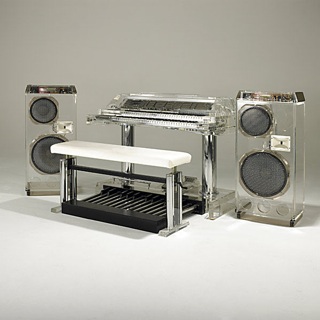 Over at ye olde Submitterator, Pea Hix points us to this magnificent c.1970 lucite Wersi Digital DX500 organ and speakers for sale. "The Delta Digital DX500 organ comes replete with all manuals, control panel templates, music stand, amplified speakers, lucite dollies, pedal board, adjustable bench and chromed keys. And it works beautifully!!!" Just $85,000 at 1stdibs.com. Over at ye olde Submitterator, Pea Hix points us to this magnificent c.1970 lucite Wersi Digital DX500 organ and speakers for sale. "The Delta Digital DX500 organ comes replete with all manuals, control panel templates, music stand, amplified speakers, lucite dollies, pedal board, adjustable bench and chromed keys. And it works beautifully!!!" Just $85,000 at 1stdibs.com."Phantasmagoric Lucite Organ and Speakers by Wersi" |
| Posted: 20 Aug 2010 10:07 AM PDT Simon Tofield's animated cartoons about his cat perfectly (and hilariously) capture feline behavior. (Via Miss Cellania) |
| Posted: 20 Aug 2010 09:47 AM PDT  Luke Mandle sent this photo (click it to embiggen) of his four-year-old son making pancakes. Can you explain why his eyes are closed on the left but open in the reflection? Luke Mandle sent this photo (click it to embiggen) of his four-year-old son making pancakes. Can you explain why his eyes are closed on the left but open in the reflection? |
| The CIA's obsession with LSD in the water supply Posted: 20 Aug 2010 09:47 AM PDT  It's a classic urban legend of drug culture: A terrorist group/the CIA/the Yippies/the mob is planning to spike a city's water supply with LSD to cause mass hysteria. In two recent articles, Fortean Times traced the rumors back to the 1950s when the CIA first became interested in the potential of LSD as a mind-control drug. From FT: The psychedelic water saga arose at the height of the Cold War in 1953, when the intelligence agency approached Dr Nick Bercel, a Los Angeles psychiatrist working with LSD in a psychotherapeutic context. After querying him on the possible consequences if the Russians were to put LSD in the water supply of a large American city, the spooks demanded Bercel calculate how much LSD would be needed to dose Los Angeles's water supply with acid.Following up on that article about the urban legend, Fortean Times has posted a new feature taking a much deeper dip into the CIA's obsession with mass dosing. Basically, they didn't take the first no as an answer. From Fortean Times: Dr Jim Ketchum was involved in the US Army's programme for testing the military effectiveness of a whole range of psychedelic chemicals. He entered his office as Department Chief one Monday morning in 1969 and found a black steel barrel, a bit like an oil drum, in the corner. [1] The military does not always explain everything, and Dr Ketchum assumed there was a good reason for this unusual addition to the furniture. However, after a couple of days he became curious. He waited until everyone else in the building had gone home one evening and opened the lid."Reservoir Drugs: Are the CIA spiking your water supply?" "Don't Drink the Water" (Thanks, Chris Arkenberg!) |
| Indie comic/cartoon extravaganza in Minneapolis this weekend Posted: 20 Aug 2010 09:40 AM PDT I am quite fond of this short cartoon (especially some of the background art) by Minneapolitan (Minneapolite?) Nick Bachman, which I saw last night at the Precious Little Film Fest—a special screening of the Scott Pilgrim movie preceded by short cartoons from local animators. The film fest is part of the Minneapolis Indie Expo—two days of events centered around great indie comics and Midwestern cartoonists. You should go. Tonight, there's graphic novel signings and kickoff party. Tomorrow, a full day of presentations, how-to workshops, and conversations with artists. Also, I am told there will be homemade donuts. And admission, gloriously, is free. |
| Posted: 20 Aug 2010 09:26 AM PDT  Are you up for the Pho Challenge (of eating a baby)? Photo snapped by BB pal Greg "Gama Go" Long at the Pho Garden restaurant in San Francisco. Are you up for the Pho Challenge (of eating a baby)? Photo snapped by BB pal Greg "Gama Go" Long at the Pho Garden restaurant in San Francisco. |
| Posted: 20 Aug 2010 09:22 AM PDT A couple of pot growers near Christina Lake, British Columbia made friends with the area's black bears. When the cops raided the farm, they encountered a dozen laid-back black bears. From the Vancouver Sun: "Ten or more black bears found guarding B.C. pot farm" |
| Blade Runner tribute: "Bladerunner revisited >3.6 gigapixels" Posted: 20 Aug 2010 08:19 AM PDT François Vautier's video tribute to the science fiction film classic Blade Runner. He explains:
[This is an] experimental film in tribute to Ridley Scott's legendary film "Blade Runner" (1982). This film was made as a unique picture with a resolution of 60.000 x 60.000 pixels (3.6 gigapixels). It was made with 167,819 frames from 'Blade Runner'.Don't miss the unicorn at 3:26. Video link: BLADE RUNNER revisited >3.6 gigapixels, at vimeo. [via BB Submitterator, thanks andydub, who spotted it via @ericavery ] |
| Nagoya and the convention on biological diversity: primer 1 Posted: 20 Aug 2010 08:36 AM PDT  Image: Nagoya Congress Center plus Millenium Falcon reworked from original photo by Paula Pedrosa. link.
So what is up with this Nagoya thing? Well, it's a big international meeting that is happening in Nagoya's Congress Centre (see the picture above), starting on October 18th and lasting until the 29th. No doubt, you weren't necessarily lured into finding out more by the conference's bouncy theme song. You certainly weren't intrigued by the reams of official documents, frequently released, yet all stoically written. The problem is, is that there is a lot of jargon in how all these meetings go down. You have a "Conference of the Parties" (or COP), you have "Conventions," and you have "Secretariats." I chose not to mention the "Subsidiary Body" part, because I believe that would have formally made the previous sentence the most boring in the universe. And as if that wasn't bad enough, a lot of these documents have been written in a painful policy speak/legalese type of language, seemingly in an effort to make readers endorse the extinction of the writers responsible. Worse still, Nagoya isn't getting a ton of media coverage, and that means you don't tend to have needed public commentary like you did with similar recent outings (for instance, Copenhagen comes to mind). Lucky for us, there seems to be a lot of similarities between these United Nations' affairs and how planetary politics appear to be run in the world of Star Wars. In any event, the similarities are good enough to warrant having a go at bridging the two. This might be simplifying things a bit, but the analogy would basically work a little like this... Convention (and specifically the Convention on Biological Diversity): I'll write more on this later, but the CBD is what all the fuss in Nagoya will be about. It's essentially an international agreement currently supported by a whole bunch of countries, which is basically up for review as well as a reboot. Also, because it's classified as a "Convention" this agreement is bound by international law. It's not like participating in a vote where the majority wins - you're either in or you're out. The goal, of course, is to come up with a document that everyone, or at least, almost everyone, is good with - understandably, not an easy thing to do. In Star Wars, this would be analogous to some sort of galactic treaty being mulled over (except that obviously the words galactic treaty are way cooler than convention). Conference of the Parties (COP): This is a collective term for all the countries who are technically already "on board" with the Convention - this has a variety of meanings including the act of signing the convention, and then managing to get your national governments to back it up (this would technically be called "ratifying" the convention). In all, there are currently 193 countries who are in the Conference of the Parties." In Star Wars terms, the COP would be analogous to all of the members of the Galactic Republic who have agreed to follow the laws bound to said galactic treaty. Secretariat: In UN affairs, the term Secretariat more or less refers to a smaller group of individuals who comprise the administrative core of a particular department or convention. This sounds very close in structure to the role of the Galactic Senate. You might also remember that in Star wars, there was a Supreme Chancellor, who headed this Secretariat. In the CBD's case, this would be the Executive-Secretary, a fellow by the name of Ahmed Djoghlaf.
Nagoya-COP10? In Star Wars, the movies anyway, a lot of the political stuff happens in that great big black room with all of the fancy floating balconies. This was the Senate Building on the planet Coruscant, which to me, is a little like the General Assembly hall in the United Nations New York headquarters. However, for these sorts of Convention meetings, (this being the tenth one for this particular COP - hence it being called "COP10"), they tend to get held in big conference centers, and in suspiciously nice locales. In other words, for our Star Wars analogy, the members of the Galactic Republic involved in the treaty probably wouldn't meet in Coruscant: instead, they would find another host planet. As well, it would be unlikely for such an analogous meeting to be held at a place like Hoth (too cold) or Tatooine (too dusty), but rather a planet like Alderaan (before it was destroyed anyway) or Naboo, since both are apparently beautiful. SBSTTA: Of course, throughout all of this, you're probably wondering where the Jedi fit in. In Star Wars, members of the Jedi Order were essentially "keepers of the peace in the Republic." Furthermore, the Jedi Council was often key in providing objective information and advice. This means that they were valued for being a source of knowledge and wisdom, and also a sort of a police force to ensure that folks follow the laws of the treaty. In our Convention on Biological Diversity context, there is something known as the SBSTTA (which unfortunately is not a droid name but a busy mess of an acronym for "Subsidiary Body on Scientific, Technical and Technological Advice.") This, I guess, can be thought of as a group of "Jedi except without lightsabers plus no cool special powers." In other words, while this SBSTTA aims to play an objective advisory role, in particular, helping the COP on the scientific and technological nuances of biodiversity, they have no part what-so-ever in enforcing the convention itself. Kind of like a bunch of Jedi's who will tell you their expert opinion on the issues being discussed, but are unfortunately incapable of kicking ass on members who choose to disregard intergalactic law. This is actually one of the big problems in these international environmental treaties - there isn't really a decent mechanism in getting COP members to follow through. It's also worth noting that the SBSTTA is analogous to what the IPCC (Intergovernmental Panel on Climate Change) does in Climate Change matters, except in a much smaller and some say slighter way (more on this later). The Emperor? In Star Wars, this was of note, being the bit about the Senator and then Supreme Chancellor Palpatine managing to scheme his way into creating the Galactic Empire. In the CBD world, there really isn't such a person or country member in the COP, but there are factors where different countries have different influences. Probably the best example is to think of something like the Trade Federation in Star Wars. This was an alliance based on economical clout - somewhat similar to how one might view the countries of the G8 or G20 these days. As well, you can imagine that countries in less fortuitous economic standings (i.e. developing countries) have an interest in making decisions together, which is what does happen in these affairs. As a side bar, I should note that, ironically, the Nagoya conference does "technically" have an Emperor involved - this would be Emperor Akihito, the head of the Japanese Imperial Family and monarch of the host country. Anyway, this should set the scene a bit. Later on, I'll write a primer on what the actual Convention on Biological Diversity is all about, how it currently kind of sucks, and why this meeting in Nagoya in particular is very very important. Slide: David Ng "Final Exam" link |
| 2010 is a key year for biodiversity stewardship Posted: 19 Aug 2010 06:32 PM PDT 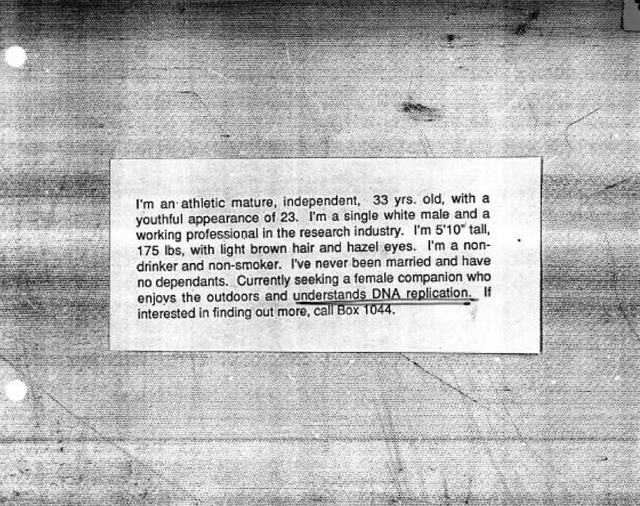 Slide: David Ng from Georgia Strait ad (circa 1997). link Well, this is pretty cool. Thanks to the fine folks at Boing Boing, I've got a two week stint here where I get to write and share things that I happen to find interesting. As well, (and this is the important bit), I'm really going to relish the opportunity to interact and learn from the Boing Boing community itself. Anyway, to put things in context, I'm involved in an education laboratory in Vancouver, where most of my activities are guided by a simple idea - that the "scientific method" is, frankly, awesome. Seriously, it's one of those things that tends to not make the headline, because media generally gets caught up in the data (cancer cure found!) However, the method is really quite beautiful and in my opinion needs to be talked about more. After all, it's a pretty remarkable way of thinking that allows us to make reasonable sense of what we see around us. And as a consequence, it's played a central role in a wide myriad of things and events that we think of as being impactful, twee, wonderful, and/or frightening. In fact, it provides an important context to how our society works, and really now, it's kind of like a culture unto itself - science culture. However, it's not always easy to talk about such things. You're probably not going to see many personal ads like the one above, because, by and large, the general public doesn't tend to think that way. It doesn't necessarily see science as culture - it sees it as the phone with the video conferencing, that pill for this occasion, or that conversation you had last night that was incredibly boring. Which is a shame, since there are also many folks out there, including likely a good chunk of you readers, who think that science culture is pretty key these days. There's certainly a lot of important things going on, where having a good handle of the science (maybe not all the technical bits, but at least the scientific method part) is what one might call being socially responsible. In this light, I'm also going to use this two week opportunity to talk about biodiversity. This is because I'm currently doing a sabbatical at London's Natural History Museum, which is as iconic as an institution can get on all things biodiversical (not a real word, but shouldn't it be?) Also, 2010 happens to be the UN declared "International Year of Biodiversity," an honor which is a rather complicated consequence of a bunch of suits meeting way back in 1992 at what is often colloquially called the "Rio Earth Summit." Unfortunately, "complicated consequences" and "bunch of suits" doesn't tend to make for easy reading. Which is a shame, because 2010 is a very key year for biodiversity stewardship. You see, in just a few weeks in Nagoya, Japan, there is going to be a similar set of complicated consequences involving similar suit-attired people who will make decisions on how the geopolitical world will view biodiversity for the next couple decades. All to say that: (1) there was a reasonable chance that you weren't aware of any of this Nagoya stuff; and/or (2) you're bored already. And with that, let me just state that these challenging topics are the ones I want to focus on. Hope you see some merit in them. Maybe even lend a hand? |
| "Magnetic" woman baffled by attraction Posted: 20 Aug 2010 06:49 AM PDT  Metal things adhere to "human magnet" Brenda Allison, reports the Daily Mail. The adhesion of non-magnetic items, so long as they are very light and flat--and her ability to "curse" electronics--are nice touches. Metal things adhere to "human magnet" Brenda Allison, reports the Daily Mail. The adhesion of non-magnetic items, so long as they are very light and flat--and her ability to "curse" electronics--are nice touches. |
| You are subscribed to email updates from Boing Boing To stop receiving these emails, you may unsubscribe now. | Email delivery powered by Google |
| Google Inc., 20 West Kinzie, Chicago IL USA 60610 | |








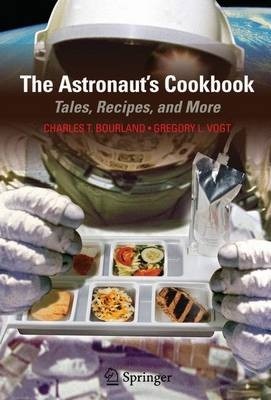












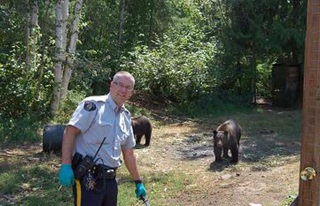 Besides the bears, some of which had cubs, the property also contained more than 1,000 marijuana plants, a young raccoon, a pot-bellied pig, a large dog, and two human residents.
Besides the bears, some of which had cubs, the property also contained more than 1,000 marijuana plants, a young raccoon, a pot-bellied pig, a large dog, and two human residents.

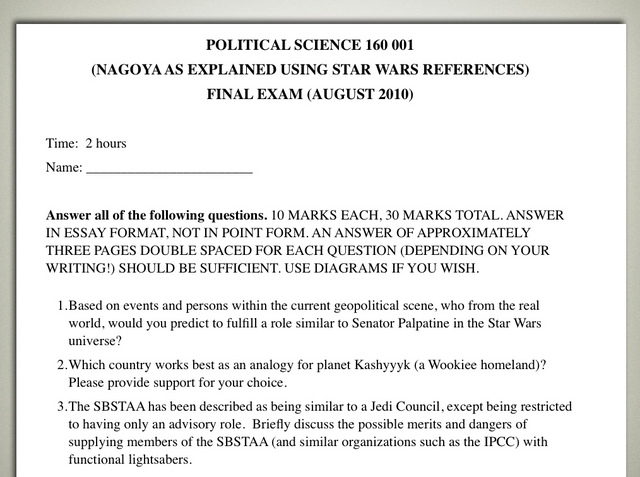



No comments:
Post a Comment